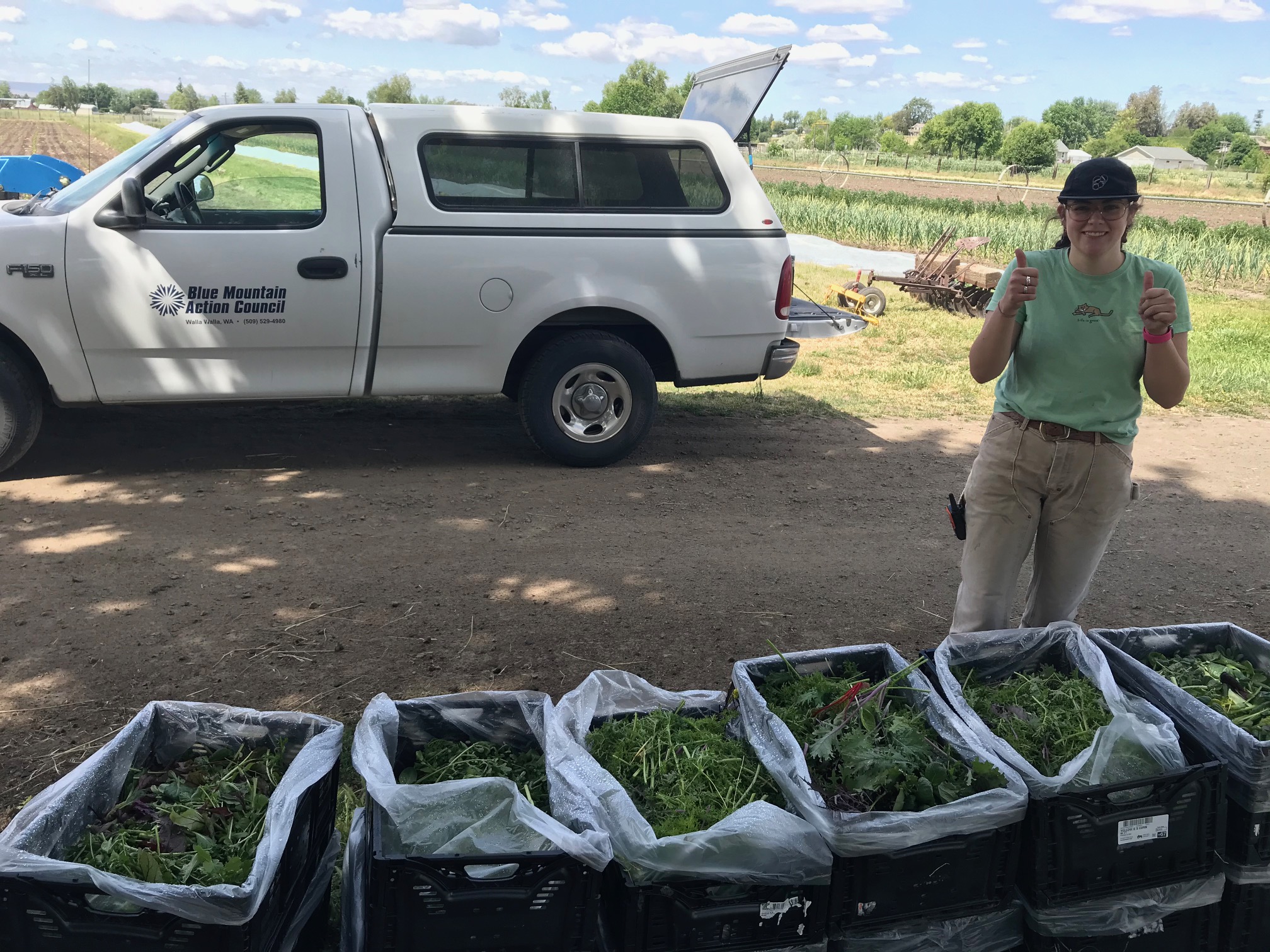How Can We Help?
Coordination
Coordination starts with contacting farmers via phone or in person, whichever is most convenient, to ask if they have excess crops or are finished harvesting for the year. Some farmers have annual gleans with crops like apples, melons, or pumpkins. Other farmers who have a larger variety of crops may be able to host multiple gleans in one season.
When coordinating gleaning efforts with farmers, it is important to understand the scope of the harvest and relay information to volunteers. Ask about the terrain of the farm, location as fields may not be located at a specific address, estimation of how long the glean will take, and if farmers have a maximum number of volunteers (especially important with COVID-19 precautions). This information will help the coordinator create a successful event with the proper number of volunteers, arriving well prepared.
Timing is another crucial aspect of planning. Keeping up to date on the weather patterns including droughts, heat, and frosts will help the coordinator stay up to date and informed on what to ask farmers. For example, this season there was high heat and little precipitation, this caused the tomato harvest to be pushed from August to September when the temperatures cooled. Multiple farms in the area requested gleaners come out to harvest their crop because all tomatoes came on at once. Knowing the frost date is also important because many crops like cherry tomatoes or peppers cannot survive the first frost. This informs the coordinator when to hold gleans to make sure the crop is harvested at its freshest. At BMAC, gleaners have harvested greens, sweet corn, peppers, carrots, onions, cherry tomatoes, melons, apples, squash, and pumpkins.
Field Safety
Gleaning can be strenuous on volunteers. Harvesting requires volunteers to work in various weather conditions, use sharp tools, complete repetitive motions like bending down and standing, and lifting crates weighing anywhere from 10-40 lbs. Creating a safe environment for all participants is at the top of the priority list. BMAC requires all volunteers to sign a waiver to protect the organization and the farmer from liability and inform the volunteer of the risks associated with the activity. Inform the volunteers directly via email or phone as many people will not read the information in the waiver. The waiver also contains a photo release because the organization may want to share photos on social media to promote programs.
Informing volunteers of the risks before the event will help mitigate instances of heat-related illness or other injuries. Proper clothing is also necessary. Do not assume that people know what to wear in a farm environment. Many volunteers have never set foot on a farm before and in order to ensure that they have a good experience, they should be well informed. Closed-toed shoes, hats, clothes that can get dirty, pants if walking through or near taller plants, and long sleeves if there is high sun are all good choices when it comes to attire. Telling volunteers to come prepared with sunscreen and water is also helpful. If the coordinator will be on site, bring extra bottles of water and a first aid kit.
On Site
Once the volunteers arrive on-site, providing clear information on how to harvest will help maintain integrity of the crop, especially for storage. If the farmer is available, have them walk out into the field and show what is to be harvested, the best way to harvest the crop, and how to keep produce as clean as possible as BMAC doesn’t have access to a wash station at the food bank.
Volunteers
BMAC has a large variety of volunteers. The Whitman Glean Team partners with the food bank and provides the bulk of volunteers for gleans. Working with a club like this is helpful because they have access to a consistent stream of interested volunteers and generally have a club president who is willing to take on more responsibilities like finding times that work with student schedules or coordinating drivers.
Having the right volunteers for the glean is important. If the organization has families who volunteer with young kids, making sure the environment is suitable to their needs will ensure success. Kids won’t be able to help with harvesting greens as that requires the use of knives but cherry tomatoes are a perfect crop for tiny hands to harvest.
End of the Glean
At the end of the glean, make sure to promote future gleans to volunteers. Get them excited about upcoming opportunities. Touch base with the farmer to ensure that they are happy with the result, ask if they’d be interested in hosting volunteers again, and thank them for donating their time and product. If the glean is a seasonal event, i.e. pumpkins, end-of-year melons, or apple orchards, get confirmation that they are interested in doing it again next year to continue this relationship.
After the Harvest
Back at the food bank, it is important to track produce and volunteer numbers. Weigh produce and assess the next steps. Does the produce need to be repacked i.e. tomatoes in clamshells? Does it need to be transferred to boxes? Can it sit out like squash or does it need to go immediately in the cooler? Where is this produce going, directly to clients, another food bank for distribution? These are important questions to ask for distribution and ensuring the produce is utilized.
Follow up with volunteers and farmers via email to let them know the stats from the day. Express gratitude, and inform them on how many pounds were harvested, where the produce will be distributed, and how many families this donation will feed. This follow-up helps create a connection between the farmers generosity, volunteers work and shows the next steps being done at the food bank. For volunteers, inform them again of future volunteer opportunities. For farmers, reiterate gratitude and plans for a next glean or volunteer event.



